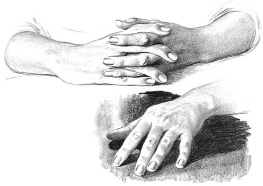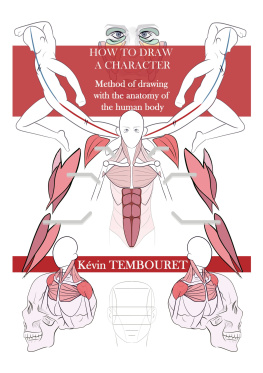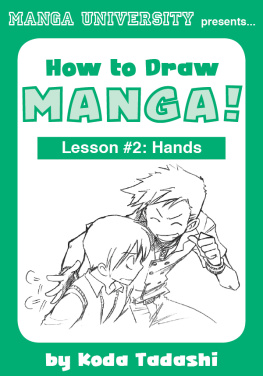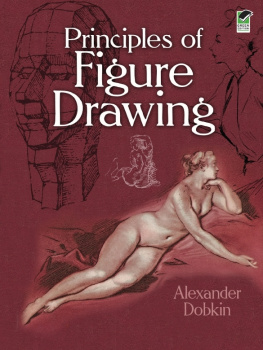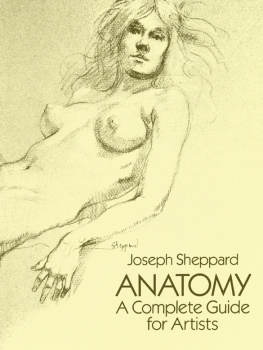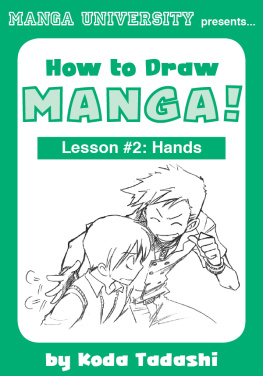
Drawing of the Hand


Dover Publications, Inc.
Mineola, New York
Copyright
Copyright 1973 by Joseph M. Henninger
All rights reserved.
Bibliographical Note
This Dover edition, first published in 2013, is an unabridged republication of the work originally published by Borden Publishing Company, Alhambra, California, in 1973 under the title Drawing of the Hand and Its Anatomy. The two color plates in the original edition have been reproduced on the inside front and back covers. They also appear in black and white in their original positions in the book on .
Library of Congress Cataloging-in-Publication Data
Henninger, Joseph M., 1906
Drawing of the hand / Joseph M. Henninger.
pages cm.
Summary: An expert instructor explains how to draw the human hand, noting basic but seldom observed facts dealing with comparative measurements. This volume consists of numerous illustrations depicting the anatomy of the hand and the forearm as well as a portfolio of drawings by Old Masters and contemporary artists, many accompanied by the authors commentsProvided by publisher.
eISBN-13: 978-0-486-77995-9
1. Hand in art. 2. DrawingTechnique. 3. Anatomy, Artistic. I. Title.
NC774.H46 2013
743.49dc233
2013022016
Manufactured in the United States by Courier Corporation
49302401 2013
www.doverpublications.com
Contents
INTRODUCTION
M ICHELANGELOS REMARKS on drawing have often been quoted, and I am sure that most of the people who have ever had anything to do with the subject would agree that the possession of the ability to draw is truly, in his words, a great treasure.
The possession of this is so difficult to achieve, however, that there are not many people today who have any desire to make the effort. One wonders, now that there is a strong resurgence of interest in drawing, just where the aspiring young draughtsman will be able to learn his craft, as there are very few teachers left who can help a student through the discipline and the rigors of experiencing form in the most direct way.
Joseph Morgan Henninger who made the drawings in this book is one of the few. His knowledge of drawing and anatomy is profound, as this book proves, and his experience with those subjects covers thirty-six years as a teacher and head of the Department of Illustration at Art Center College, in Los Angeles, California. During that time he was responsible for the development of literally thousands of devoted young students to a point where they were well equipped to go out and earn their living in the various branches of the graphic arts.
On his own account his career has been an outstanding one. At an early age he was awarded a scholarship to the Herron Art Institute in Indianapolis, Indiana, and he subsequently won a three year scholarship to the cole des Beaux Arts, Paris, where he studied under Lucien Simon. After returning to this country as a qualified landscape and portrait painter, he married the brilliant young Sorbonne student he met on the Leviathan during the homeward voyage and eventually moved to Los Angeles. From then on, he progressed smoothly into advertising illustration and teaching, with time out during the war years for a job of drawing fighter planes for Lockheed. At the close of the war he resumed his twin careers, and in the advertising field was the winner of thirty-two awards, eight of which were medals. He was the first president of the Los Angeles Society of Illustrators and the only illustrator ever elected to the presidency of the Los Angeles Art Directors Club. He was chairman of the Art Advisory Board of the State of California for three years and acting president of the California Arts Club for two.
During all this time he was an active three-day-a-week teacher at Art Center and his classes consistently swept the major prizes in the national scholarship competitions. During the past ten years, as time allowed from his busy schedule, he has worked at compiling this monumental job which in my estimation is the best of all the books on the subject that have ever been published. It should guarantee, for all time, Joe Henningers reputation as an outstanding expert in that field, and should also prove to be the practical reference book on hands that the artists, craftsmen and students have so long and so sorely needed.
Donald Teague, N.A.A.W.S.
AUTHORS NOTES
T HIS BOOK has been written with three objectives in mind:
1. To fulfill a need for a book devoted exclusively to the drawing of the hand.
2. To clarify, as much as possible, the problems commonly associated with the drawing of the hand.
3. To lay at rest the old saw that hands are impossible to draw.
After some thirty or more years as an instructor at Art Center College of Design, I have concluded that art students are not avid readers but are picture lookers/ Since this seems to be the norm, the text of this book shall be held to the minimum, and explanatory notes accompanying the plates shall be as minimal as clarity permits.
This book is not intended as a catalogue of gestures, neither is it intended as a copybook of drawing techniques. Hopefully, it shall be an inspiration to the serious student to acquire a greater knowledge, and achieve mastery in drawing the hand.
The plates in this book have been reproduced at the actual scale of the original drawings. The medium used in their execution is given on each plate.
Aspiring art students devote years of arduous study to the drawing of the head and figure, yet often times give short shrift to the study of the hand. Many a competent portrait has had its quality reduced by poorly painted hands. All manner of devices are devised to avoid the task of painting or drawing the hands. Illustrators, however, realize the importance the hand plays in fortifying the expression of emotion and are, by and large, excellent draughtsmen of the hand. Actors and dancers are aware of what part the proper gesture plays in conveying an emotion. The pantomimists art relies heavily upon the hands to express his message. The hand itself without the spoken word becomes the spokesman, to wit: the raised clenched fist defiance; the clenched fist hanging at the side resolution; the pointed index finger accusation; the cathedral like gesture of the two hands prayer; the hands raised and open supplication; and on and on, the list seems endless.
The hand assists in establishing character to wit the heavy, muscular hand of the laborer drawn on the arm of a young beautiful girl would be ridiculous and vice versa. The age and physical condition of the model is mirrored in the hands, ergo the hands are extremely important to arrive at total characterization.
Fortuitous evolutionary development of mans thumb, and its placement, has made man the dexterous creature he is. Many animals, starting with the great apes and the monkeys, have thumbs, but the placement of these digits renders them virtually useless for great dexterity. Only man can make his thumb approximate with each of his four fingers with ease. This happy ability has made him capable of executing the tasks that his fertile brain originates. He has built the most delicate mechanisms and constructed awe inspiring structures. Imagine, if you will, Edisons brain and the paw of a dog or the hoof of a horse at the end of his arm. The delicate sensitivity of the hand allows the blind to assemble the most complex devices, or to enchant us with music from the multiple keyboards of an organ.
Next page
